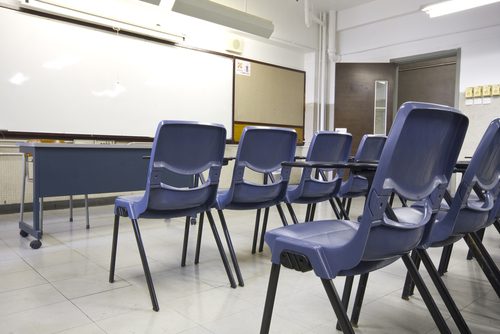GIS Partnerships Between the Community and the Education System
I believed in 1996 that the future of geography was with technology and I still believe that even more so today. Geography is alive and well in the real world because of technical geography despite losing ground in the K-12 school system. GIS is still stagnant there too. Why is this so? Both the public and the school system does not recognize its relative importance and value. The fundamental problem lies in the school system and teacher training-with both of which I am more than familiar. I’ll continue my story from my post of Sept. 9th.
To prepare myself to teach GIS, I took a GIS course at a technical college and I spent a lot of personal money travelling to geography conferences to research what was happening in the schools and to make contacts. In how many other professions would one have to do this? I discovered the wonderful work being done in Ontario. I met Charlie Fitzpatrick of ESRI Education in the US at the National Council for Geographic Education AGM in Boston and familiarized myself with the ESRI K-12 bundle. I grew to find out everything there was to know about who was teaching GIS and where in Canada and the US. We purchased ArcView, which became our primary system.
I had a three-pronged approach: my school/school board, the Ministry of Education, and the community. As I mentioned before change in education is slow. At the ground level, the initiative had taken root, generated by a person (me) and supported by her administrator. As Department Head of Social Studies, I had access to all the grade nine classes (10) and I started to teach GIS. Because of the foresight of another person heavily involved in technology in education, Alister Dyke, a geographer, who was at that time a visionary principal of one of St. John’s largest high schools into which the students from school would feed, decided that this was something his school would like to do also. Because GIS was not in the curriculum, he had to offer it as a locally approved course, which he did. We convinced the school board to hold a summer institute, which I taught, for interested geography teachers.
This could not be done without the approval of the Ministry of Education, so they were brought into the loop. We envisioned it spreading throughout the school system in St. John’s and it continued to do so until I retired in 2001. Several high schools purchased the software. Eventually, the province acquired a site license.
In my search for knowledge, support, and expertise, ironically, most of the assistance I received was from outside the school system. ESRI, through their Halifax rep, Jim McKay, and their Education rep at that time, Chris North, were exemplary, meeting with me or visiting the classes. Everyone I turned to in the Geomatics community was outstanding in their support and I cannot thank them enough. The quest for data sets led me to Rob Butt of the City of St. John’s, Larry Nolan of Mines and Energy, Alberta Wood and Dan Duda of Memorial University’s Map Library and the most invaluable of all, Neil MacNaughton, the Director of Mapping, Surveys and Lands, Government of Newfoundland and Labrador. The willingness to share of these busy professionals is a true example of how partnerships can enhance and transform public education.
What happened between 2001 and the present will have to wait for next month.









Excellent article Peggy! I have been out of the primary-secondary school system for quite a while so I turn to my son to tell me what’s going on. Here in the Niagara region of Ontario we have two world class post secondary institutions in Brock Univeristy and Niagara College that have high caliber geography/earth science/GIS education (along with other industries where GIS could be used, agriculture/tourim)
Some would argue that a problem we have here in the area is that after high-school, students want to leave and attend universities elsewhere because of the perceived lack of opportunities available upon completion of their degrees. A goal of mine is to reach the students in K-12, turn them on to GIS so they might see our local institutions as viable options. This of course goes hand in hand with attracting industry to the area so they have jobs to go to when they are done… Baby steps I guess..
Cheers,
I commend you for your wish to make a difference. There is no magical solution. But if the public and parents demand it in the curriculum it will happen. The curriculum is always a relection of what is relevant to society at the time-look at Math/Science in the 70s/80s and French after Official Languages Act. Then in the 90s, it was compuers and entrepreneurship We all know where business led us…a mess that’s not fixed yet. Society has to make the connection that GIS tells a story for every reference point and that it is invaluable for teaching problem-solving and decision-making. Keep posted I have a lot more to say in future. I appreciate youir feedback.
Darren! I would love to work with you to achieve our shared goal ‘to reach the students in K-12, turn them on to GIS’. We are presently working on some activities to do this in the Atlantic provinces. I’d love to get your input! Please feel free to email me: aharris@esri.ca or call 416 441 6035 x6352. Thanks Peggy for another great article!
Geography is indeed sidelined in the K-12 education system which is surprising owing to the undisputed importance of this subject. And so much has the condition worsened that the students of the developed countries lag behind in basic geographical knowledge from the students of developing countries. Hopefully the influence of technology brings a much needed difference.
This is so true. Raising public awareness and getting geotechnologists involved is one of the solutions. We also need to look at what’s being done in the UK, Australia, and NZ, where Geography in the schools is more successful.